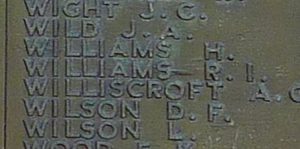Dyffryn Ardudwy is a village situated on the main A496 road between Harlech and Barmouth, in the ancient county of Merionethshire. The men of the village who fell during both World Wars are commemorated on a granite war memorial, in the form of a Celtic Cross, which is located in a central location, at a road junction on the east side of the A496. The front face is inscribed with the names of the men of the village who fell during the Great War, whilst a side face was obviously inscribed after World War Two, to commemorate the men who fell in that latter conflict.
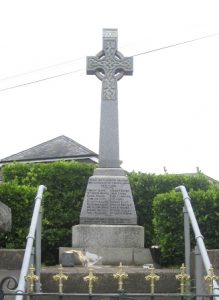
The Great War, 1914-1918
Ernest Clark, Private, 36510, South Wales Borderers. Ernest was born in London. He had come to Wales to work as a collier at Aberfan around the turn of the century, and married Jane Roberts, of Bronygarnadd, Dyffryn, on 22 March 1907. Ernest enlisted at Barmouth into the 19th Battalion, Royal Welsh Fusiliers on 26 April 1915. He was then transferred to the 14th Battalion, South Wales Borderers on 12 May 1916, before being again transferred to the 65th Training Reserve Battalion, at Kinmel Park. Ernest was run over by a motor lorry at Kinmel Park on 23 December 1916, and died in the military hospital there of his injuries two days later, on 25 December 1916, aged 47. His remains were brought home for burial in St. Enddwyn’s Churchyard.
Stanley Davies, Private, 299434, United States Expeditionary Force. Stanley was born in Kansas in 1894, the son of William Watkin Davies and Margaret Davies. On 23 April 1898 the family had returned home to their native Wales and lived at London House, Dyffryn. Stanley enlisted into the US Expeditionary Force and was based in a training camp at Winchester when he took ill, and died of pneumonia on 24 October 1918, aged 24. He is buried in Winchester Cemetery.
William Lloyd Davies, Private, M/349283, Royal Army Service Corps. William was the son of Hugh and Elizabeth Davies, of Dyffryn. He married Jessie Nina Jones, of Oswestry, on 28 May 1907, after meeting her whilst working in the town as a Drapers Assistant. William enlisted into the Royal Army Service Corps in Wrexham, and was posted to the MT Training Depot at Isleworth. He was then posted to Kinmel Park, where he took ill. He was taken to Bangor Military Hospital where he was found to have contracted meningitis, and he died there soon afterwards, on 28 March 1918, aged 34. William’s remains were brought home for burial in St. Enddwyn’s Churchyard, Llanenddwyn.
John Evans, MM, Sergeant, 25826, Lancashire Fusiliers. John was the son of John Morgan Evans and Laura Evans, of Bronyfoel Isaf, Dyffryn. He worked as a farm servant prior to the war. John enlisted at Dolgellau into the army and after completing his training was posted to France in early 1916, before being posted to the 15th Battalion, Lancashire Fusiliers. The battalion was attached to 96 Brigade, 32nd Division, and took part in its first major action during the opening of the Somme Offensive from 1 July 1916. The Division fought throughout the entire Somme campaign, and in March 1917 followed the German Retreat to the Hindenburg Line. Its next major action came when the Division was caught up in heavy fighting during the Germans Spring Offensive from 21 March 1918. The Division then moved south, and from 21 August 1918 onwards took part in the epic Allied advance which followed the epic Australian success at Villers Brettoneux on 8 August. The 32nd Division took part in the advance to the mighty Hindenburg Line over the coming weeks. John was killed in action during the crossing of the St. Quentin Canal on 30 September 1918, during the battalions advance towards Joncourt. He is buried in Uplands Cemetery, Magny-La-Fosse, France. John had won the Military Medal about a year before his death.
Lewis Evans, Private, 1002, Royal Welsh Fusiliers. Lewis was the son of Robert and Catherine Lewis, of Gornant Uchaf, Dyffryn. He enlisted at Welshpool into the 7th Battalion, Royal Welsh Fusiliers. The battalion was a Territorial unit, which mobilised for war at Newtown in August 1914, as part of North Wales Brigade, Welsh Division and moved to Conway until the end of the month, before moving to Northampton. In December the Division moved to Cambridge and then in May 1915 to Bedford, where the Division was numbered and the formation became 158 Brigade, 53rd (Welsh) Division. On 19 July 1915 the entire Division sailed from Devonport for Imbros and on 9 August 1915 landed at Suvla Bay. The infantry moved off the beaches into the bush, but due to a lack of maps and no knowledge of the terrain, many of the units became disorientated, and the situation became chaotic. Lewis was killed in action during heavy fighting on the following day, 10 August 1915, aged 22. He has no known grave and is commemorated on the Helles Memorial, Gallipoli.
Evan Thomas Griffiths, MM, Lance Corporal, 19232, Royal Welsh Fusiliers. Evan was the son of Edward and Laura Griffiths, of Glanrhos, Dyffryn. He enlisted at Caernarvon into the 16th Battalion, Royal Welsh Fusiliers soon after the outbreak of war. The battalion was raised at Llandudno by the Welsh National Executive Committee from a cadre from the 13th Battalion, joining 128 Brigade, 43rd (Welsh) Division and trained in North Wales before moving to Winchester in the summer of 1915, where the formation became renumbered 113 Brigade, 38th (Welsh) Division. The Division moved to France on 2 December 1915 and moved to the Nursery Sector near Fleurbaix for trench initiation alongside the Guards Division. The Division then held a sector of the line near Cuinchy before marching south to the Somme sector in June 1916 to take part in the assault on Mametz Wood. The first attack on the wood was launched on a two-battalion front on 7 July, but failed, and the Divisional Commander, Sir Ivor Philipps, was replaced before the Division attacked again on a two Brigade front on 10 July 1916. After two days of heavy hand to hand fighting within the wood, the Germans withdrew, and the battered Welshmen moved via Hebuterne to Boesinghe, on the Yser Canal, where it remained until launching its attack on Pilckem Ridge on 31 July 1917. The 15th Welsh remained in the line, and also took part in the Battle of Langemarck, before the entire Division was moved to positions near Armentieres over the winter. After the Germans launched their offensive on the Somme on 21 March 1918, the Division was moved back to the Somme, and took up positions north of Albert, around Aveluy Wood. On 21 August 1918 the Division launched a famous offensive across the flooded Ancre Valley and captured Thiepval Ridge before taking part in the great advance towards the Hindenburg Line. On 24 August 1918 Evan’s battalion was involved in fighting to capture the ruins of Contalmaison, when Evan was killed by machine-gun fire. The 21-year-old has known grave and is commemorated on the Vis-en-Artois Memorial, Haucourt, France. Evan had been awarded the Military Medal for his actions at Passchendaele the previous year.
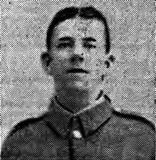
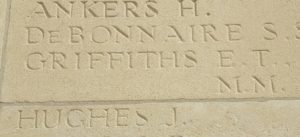
Iolo Mabon Lewis, Corporal, 291109, Royal Welsh Fusiliers. Iolo was the son of Edward and Jane Lewis, of Bryn Hyfryd, Llanbedr. He had enlisted at Newtown into the 3/7th Battalion, Royal Welsh Fusiliers on 26 June 1915 and remained on home service for over a year. Iolo married Martha Louisa Riches, a domestic servant from London, in 1916. Martha had worked for Lord Glanusk at Brecon before finding a position at Aber Atro Hall prior to the war. On 11 December 1916 he embarked at Southampton for Egypt to join the 1/7th Battalion, Royal Welsh Fusiliers, which was attached to the 53rd (Welsh) Division. The Division was near the Suez Canal, as part of the EEF, preparing to launch its offensive into Palestine. Iolo arrived in Egypt safely on 26 December and joined the battalion five days later. He was almost immediately promoted to Corporal, then to Acting Sergeant. The coastal city of Gaza was to the north of the canal, and was the centre for the Turkish defensive position in Palestine. On 26 March 1917 the First Battle of Gaza was launched and the 53rd (Welsh) Division was among the attacking forces, attacking the Gaza positions from the south. The day ended in chaos for the EEF, and most of the ground gained was later ceded back to the Turks. Among the many casualties suffered during the days fighting was Iolo. He was 27 years old and is buried in Gaza War Cemetery, Israel.
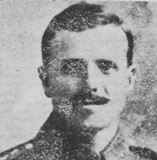
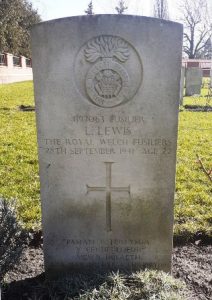
Seisyllt Hugh Lloyd, Lieutenant, Royal Naval Air Service. Seisyllt was born at Wrexham on 3 June 1898, the son of Lieutenant Colonel George William David Bowen Lloyd and Mrs. Lilian Emily Lloyd. When his father retired from the Royal Welch Fusiliers, the family moved back to their home at Brunant, Pumsaint, and also had a home at Bron-y-Graig, Harlech. While his father went to France as second in command of the 2nd Battalion, Royal Welsh Fusiliers in 1914, Seisyllt was commissioned into the Royal Naval Air Service where he trained as a Pilot. He joined 10 Squadron RNAS in France, where he piloted a Sopwith Triplane. Seisyllt was flying over Zillebeke Lake on 14 August 1917, when he was shot down at around 16.00 by heavy anti-aircraft fire, and was last seen heading west out of control. He was 19 years old, and is commemorated on the Arras Flying Services Memorial, France.
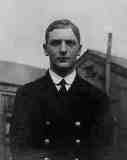
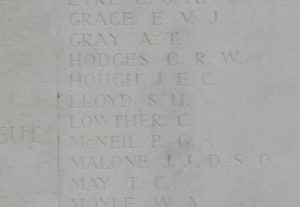
Thomas Lloyd, Private, 265677, Royal Welsh Fusiliers. Thomas was the son of Thomas and Catherine Lloyd, of Minffordd Horeb, Dyffryn. He worked as a Draper prior to the war, and had lived at Llanbedr, Barry and then at Neath by 1911. At some time prior to the war Thomas had served with the 3rd Volunteer Battalion, Royal Welsh Fusiliers. He re-enlisted into the 6th Battalion, Royal Welsh Fusiliers at Carnarvon on 3 October 1914, giving his address as 14, Stanley Crescent, Holyhead. He served at home with the 2/6th Battalion, RWF until embarking at Devonport with the 1/6th Battalion, RWF on 14 July 1915. The battalion was attached to the 53rd (Welsh) Division and landed at Suvla Bay, Gallipoli on 8 August 1915. Thomas survived the carnage of the landings, but by October had become ill and was admitted to the 2nd Welsh Field Ambulance after contracting dysentery and jaundice. He was then evacuated to the 17th General Hospital, Alexandria before returning to England on 8 December 1915 aboard the Hospital Ship Essequibo. It was over a year before Thomas had recovered enough to return to duty and on 12 January 1917 he embarked at Devonport for Alexandria, joining the 1/5th Battalion, Royal Welsh Fusiliers, which was on the Suez Canal with the 53rd (Welsh) Division. The coastal city of Gaza was to the north of the canal, and was the centre for the Turkish defensive position in Palestine. On 26 March 1917 the First Battle of Gaza was launched and the 53rd (Welsh) Division was among the attacking forces, attacking the Gaza positions from the south. The day ended in chaos for the EEF, and most of the ground gained was later ceded back to the Turks. Thomas was posted as wounded and missing during the day, but was never seen again, so is officially recorded as having been killed in action on that day, 26 March 1917, aged 42. He has no known grave and is commemorated on the Jerusalem Memorial, Israel. Thomas is also commemorated on the Llanbedr War Memorial.
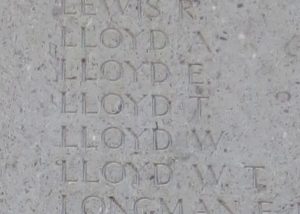
Wynne William Lloyd, Private, GS/67740, Royal Fusiliers. Wynne was the son of David and Jane Wynne Lloyd, of The Smithy, Dyffryn. He enlisted at Barmouth into the Army Service Corps Motor Transport section, but after completing his training was posted to France with the Middlesex Regiment on 10 August 1917. On 25 August William was transferred to the 2/4th Battalion, London Regiment, and then on 11 November 1917 was transferred again to the 4th Battalion, Royal Fusiliers, which was attached to 9 Brigade, 3rd Division. Wynne joined the battalion at Cambrai, where it was taking part in the Battle of Cambrai. The Division remained in that sector over the winter and was among the units hit hard during the German Spring Offensive of 21 March 1918, before being transferred to Flanders to rebuild, and was again thrown into fierce fighting when the Germans launched the second phase of their offensive along the Lys Valley the following month. The Division moved back south soon afterwards and from 21 August 1918 onwards took part in the great offensive towards the Hindenburg Line. On 1 September the 3rd Division attacked and captured the village of Ecoust St Mein and took part in heavy fighting over the coming days. Wynne was wounded during the attack, and died of his wounds on 3 September 1918, aged 21. He is buried in Bac-Du-Sud British Cemetery, Bailleulval, France.
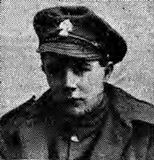
Enoch Richard Morgan, Gunner, 41975, Royal Field Artillery. Enoch was born in Forden, Montgomeryshire in 1883, the son of Richard Morgan and Gwen Morgan (nee Williams). Following the death of his father in 1885, his mother moved the family back to her native Dyffryn, and they set up home with her widowed mother at Coed Talywern, Dyffryn. By 1911 Enoch had moved away, and was lodging at 15, Bryn Taff, Aberfan, where he worked as a collier. He enlisted at Aberfan into the Royal Field Artillery, and was posted to France on 5 September 1915. At some time afterwards, Enoch was posted out to India. He became ill whilst in India, and died there of pneumonia on 7 November 1918, aged 35. Enoch is commemorated on the Kirkee 1914-1918 Memorial, India, and also on the Aberfan war memorial.
David John Price, Private, 60779, Welsh Regiment. David was the son of Edward and Jane Price, of Level Crossing, Dyffryn. He worked on the Cambrian Railways with his father prior to enlisting at Wrexham into the Welsh Regiment. David was posted to France towards the end of 1917, joining the 15th Battalion, Welsh Regiment, which was at Armentieres attached to 114 Brigade, 38th (Welsh) Division. The Division had moved there following its famous success during the capture of Pilckem Ridge on 31 July the previous year. It remained in the area over the winter, and at the end of March 1918 moved south to the Somme, to relieve the battered 2nd and 47th Divisions in the line north of Ypres, along the Bouzincourt Ridge. The Division remained here until 21 August when the 15th Welsh crossed the flooded Ancre valley, clearing the way for the entire Division to assault Thiepval Ridge and begin its part of the great offensive towards the Hindenburg Line. The Division pushed its way across the old Somme battlefields over the coming weeks, and by the time it had reached Sailly-Saillisel, David was granted two weeks leave and returned home. He re-joined the battalion in France in the second week of October, while it was in billets in Bertry. David was killed in action soon after re-joining the battalion, on 27 October 1918, aged 20. He is buried in Forest Communal Cemetery, Nord, France.
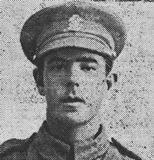
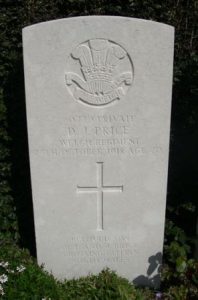
John Richards, Private, 2785, Royal Welsh Fusiliers. John was the son of Richard and Catherine Richards, of Railway Crossing, Llanbedr. He enlisted at Newtown into the 1/7th Battalion, Royal Welsh Fusiliers. The battalion mobilised at Montgomery on 4 August 1914 as part of North Wales Brigade, Welsh Division. The Division moved to Bedford in May 1915 where it was reorganised, becoming 158 Brigade, 53rd (Welsh) Division, and on 19 July 1915 sailed from Devonport for Imbros, before landing at Suvla Bay on 9 August 1915. The Division advanced inland, but was hindered by a lack of knowledge of the terrain and poor maps, so the advance soon turned into chaos. John was killed in action on the following day, 10 August 1915, aged 21. He has no known grave and is commemorated on the Helles Memorial, Gallipoli. He is also commemorated on the war memorials at Dyffryn Ardudwy and at Llanbedr.
Edward Roberts, Private, 17503, Royal Welsh Fusiliers. Edward was the son of Edward and Laura Roberts, of Tyisaf, Dyffryn. He enlisted at Barmouth along with his brother, John, into the 16th Battalion, Royal Welsh Fusiliers soon after the outbreak of war. The battalion was raised at Llandudno by the Welsh National Executive Committee from a cadre from the 13th Battalion, joining 128 Brigade, 43rd (Welsh) Division and trained in North Wales before moving to Winchester in the summer of 1915, where the formation became renumbered 113 Brigade, 38th (Welsh) Division. The Division moved to France on 2 December 1915 and moved to the Nursery Sector near Fleurbaix for trench initiation alongside the Guards Division. The Division then held a sector of the line near Cuinchy before marching south to the Somme sector in June 1916 to take part in the assault on Mametz Wood. The first attack on the wood was launched on a two-battalion front on 7 July, but failed, and the Divisional Commander, Sir Ivor Philipps, was replaced before the Division attacked again on a two Brigade front on 10 July 1916 and after two days fighting drove the Germans out. At some time after Mametz, Edward attended a Machine Gun course, and was then transferred to the 2nd Battalion, Royal Welsh Fusiliers, which was attached to 19 Brigade, 33rd Division. The Division was also on the Somme, and wintered there before moving to the Arras sector early in April 1917 and took up positions near Henin, facing the Hindenburg Line. On 23 April 1917 Edward’s battalion was ordered to support an assault on the Hindenburg Support Line, west of the Sensée River. The battalion got caught up in a vicious fight in Tunnel Trench, and suffered terrible casualties during the day. Edward was among those killed during the days desperate fighting. The 20-year-old has no known grave and is commemorated on the Arras Memorial, France.
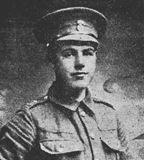
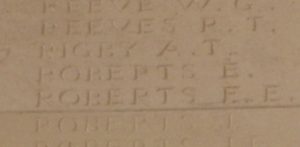
William Richard Thomas, Private, 282624, Lancashire Fusiliers. William was the illegitimate son of Annie Thomas, a servant, of Dolserau Hall, Dolgellau. He was raised by his uncle and aunt, Robert and Margaret Jones, at Fachwyddil, Dyffryn. William enlisted at Barmouth into the army and was posted to the 10th Battalion, Lancashire Fusiliers. The battalion was attached to 52 Brigade, 17th Division and saw heavy fighting on the Somme, when it captured Fricourt on the opening day of the offensive. The Division then moved to the Arras sector and fought in the First and Second Battles of the Scarpe and the Capture of Roeux. The Division then moved to Ypres, and took part in the First and Second Battles of Passchendaele. William was transferred to the 2/7th Battalion, Lancashire Fusiliers about this time, and became of officer’s orderly. The battalion was attached to 197 Brigade, 66th Division and was also in the Ypres Salient. William was killed in action at Ypres on 10 January 1918, just prior to the Divisions move south. He was 21 years old and is buried in Menin Road South Military Cemetery, Belgium.
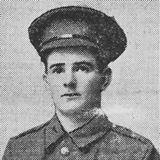
David William Williams, Corporal, G/24765, Queen’s Own (Royal West Kent Regiment). David was the son of William and Mary Williams, of Fachwen, Dyffryn. He was an army reservist, and was working as a postman when he married Jane Lee Williams, of Brynffynon, Dyffryn on 23 March 1912. Following the outbreak of war, David re-enlisted into the army at Barmouth, and was posted to the 7th Battalion, Queen’s Own, which was attached to 55 Brigade, 18th Division. The Division saw its first major action during the launching of the Somme offensive on 1 July 1916, and fought throughout the offensive, capturing Trônes Wood before taking part in the Battle of Delville Wood. In October the Division took part in the Battle of the Ancre Heights, capturing the Schwaben Redoubt, and helped capture Regina Trench. It then fought at the Battle of the Ancre, before wintering on the Somme. In March 1917 the Division followed the German Retreat to the Hindenburg Line, and in May took part in the Third Battle of the Scarpe before moving to Ypres, where it fought throughout the offensive. By early 1918 the Division was stationed south of the Somme, and was one of the Divisions hit by the German Spring Offensive of 21 March 1918, seeing heavy fighting during its withdrawal towards Villers-Bretonneux. On 24 April 1918 David’s battalion moved into the line near Boves and launched a counter-attack against the Germans facing them. David was killed in action during the attack that day. He was 39 years old and is buried in Crucifix Corner Cemetery, Villers-Bretonneux, France.
William James Wynne, Private, 36612, Royal Welsh Fusiliers. William was the son Hugh Pritchard Wynne and Annie Catherine Wynne, of Meifod Uchaf, Dyffryn. He worked as a farmer prior to enlisting into the Royal Welsh Fusiliers at Barmouth on 5 November 1915. In March 1916 William was drafted to France, and was sent to Marseilles with a draft of reinforcements for the 11th Battalion, Royal Welsh Fusiliers. William embarked at Marseilles on 13 November 1916 for Salonika, where he joined the battalion on 29 November. The battalion was attached to 67 Brigade, 22nd Division, and had been in Salonika for a year. The Division had been part of a force despatched there to aid the Greeks, following the Bulgarian and Austrian invasion of Salonika in 1915. William was wounded in July 1916 and spent six weeks in hospital before going home on leave. He re-joined the battalion on 22 January 1918. On 18 September 1918 the Allies launched a massive offensive against the Bulgarians, known as the Second Battle of Doiran. William was killed in action during the days fighting. He was 21 years old and is buried in Doiran Military Cemetery, Greece.
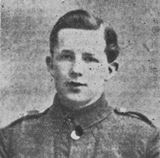
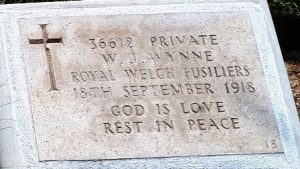
World War Two, 1939-1945
Richard Jones, Private, S/177075, Royal Army Service Corps. Richard was born on 5 March 1906, the son of John and Margaret Jones, of Pen Park, Llanfrothen. He married Edith Wynne Williams, of Morfa View, Dyffryn, in 1937. Richard worked as a baker at Dyffryn prior to the war, and when he enlisted into the Royal Army Service Corps, was posted to No 10 Field Bakery. Little is known of his military service, but Richard died at Berthengron, Penrhyndeudraeth on 24 September 1943, aged 37. He is buried in Minffordd Cemetery. His widow Edith’s father, David William Williams, had been killed in WW1.
Llewelyn Lewis, Fusilier, 4197063, Royal Welch Fusiliers. Llewelyn was the son of John and Ellen Lewis, of Dyffryn. He enlisted into the army and was posted to the 1st Battalion, Royal Welch Fusiliers. The battalion was in France with the 2nd Division in 1940, as part of the BEF. The battalion saw heavy fighting during the withdrawal to Dunkirk following the German Blitzkrieg, losing some 750 killed, wounded or missing between its first contact on 10 May until evacuation, many of them during an epic engagement at St. Venant. Llewelyn was captured on 26 May1940, the day that B Coy was over-run at Robecq. He was taken to Stalag XXA at Torun camp in eastern Germany. He drowned whilst on a working party on 28 September 1941, aged 22. Llewelyn is buried in Malbork Commonwealth War Cemetery, Poland.

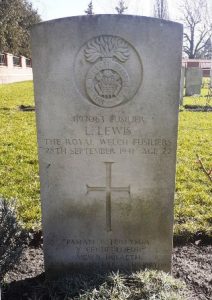
William Lowe, Fusilier, D/29614, Royal Welch Fusiliers. William was born in Australia on 18 January 1893. He married Kate Roberts, a Dressmaker, of Bryn Rhyfel, Dyffryn, in 1934, and the couple set up home at Ystumgwern Cottage, Dyffryn. William served with the 14th Battalion, Royal Welch Fusiliers, which was a home service unit, based in Liverpool at the start of the war. William died in Birkenhead on 27 December 1940, aged 48. His remains were brought home for burial in Horeb Calvinistic Methodist Chapelyard, Llanenddwyn.
Robert Idris Williams, Able Seaman, D/SSX 35901, Royal Navy. Robert was born on 12 May 1921, the son of Morris and Jane Williams, of Wesley House, Dyffryn. He enlisted into the Royal Navy and was posted to HMS President III for training. Robert was then posted aboard the MV Behar. He joined the ship at Liverpool in 1943 for her first voyage, when she set sail for Australia. She reached Melbourne safely and took aboard a cargo of zinc, before leaving on 19 February 1944 for Britain, via Bombay. On 9 March 1944, Behar was intercepted by the Japanese cruiser Tone, which shelled her until she sank. Many of the survivors were killed in the sea, but some 104 survivors were picked up by the destroyer and were badly treated. Robert was among the survivors taken aboard the Japanese destroyer. Some of the prisoners were disembarked in Java, but 69 others were kept aboard Tone, which put out to sea, before beating then beheading them all on 19 March 1944. Robert was among the prisoners murdered. He was 22 years old and is commemorated on the Plymouth Naval Memorial, Devon.
